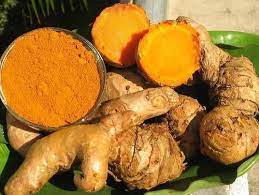Curcuma longa, more commonly known as turmeric, is a popular spice used in many culinary dishes, but it also has potential benefits in agriculture. This article will explore the latest data on the use of turmeric in farming and its potential benefits for crop growth, soil health, and pest management.
Turmeric has been found to have numerous benefits in agriculture, including its ability to improve soil health and fertility, reduce pest and disease damage, and increase crop yield. Studies have shown that the active ingredient in turmeric, curcumin, has antimicrobial and antioxidant properties that can help prevent the growth of harmful bacteria and fungi in soil, as well as protect plants from stress caused by environmental factors such as drought and high temperatures.
Research has also shown that turmeric can be an effective natural alternative to synthetic pesticides in controlling pest infestations in crops. In a study published in the Journal of Agricultural and Food Chemistry, researchers found that a curcumin-based pesticide was effective in controlling aphid populations in wheat fields, while also being safe for beneficial insects such as ladybugs.
In addition, turmeric has been found to have potential in organic farming practices as a natural soil amendment and fertilizer. A study published in the International Journal of Recycling of Organic Waste in Agriculture found that the use of turmeric waste as a soil amendment significantly improved soil properties, including increased soil organic matter content and improved water-holding capacity.
In conclusion, turmeric has great potential in agriculture due to its various benefits in soil health, pest management, and crop growth. While more research is needed to fully understand its potential in farming, it is clear that turmeric could be a valuable addition to any farmer’s toolbox.
#Turmeric #Agriculture #CropGrowth #SoilHealth #PestManagement #OrganicFarming #NaturalAlternative #Curcumin #Antimicrobial #Antioxidant #Fertilizer #SoilAmendment











